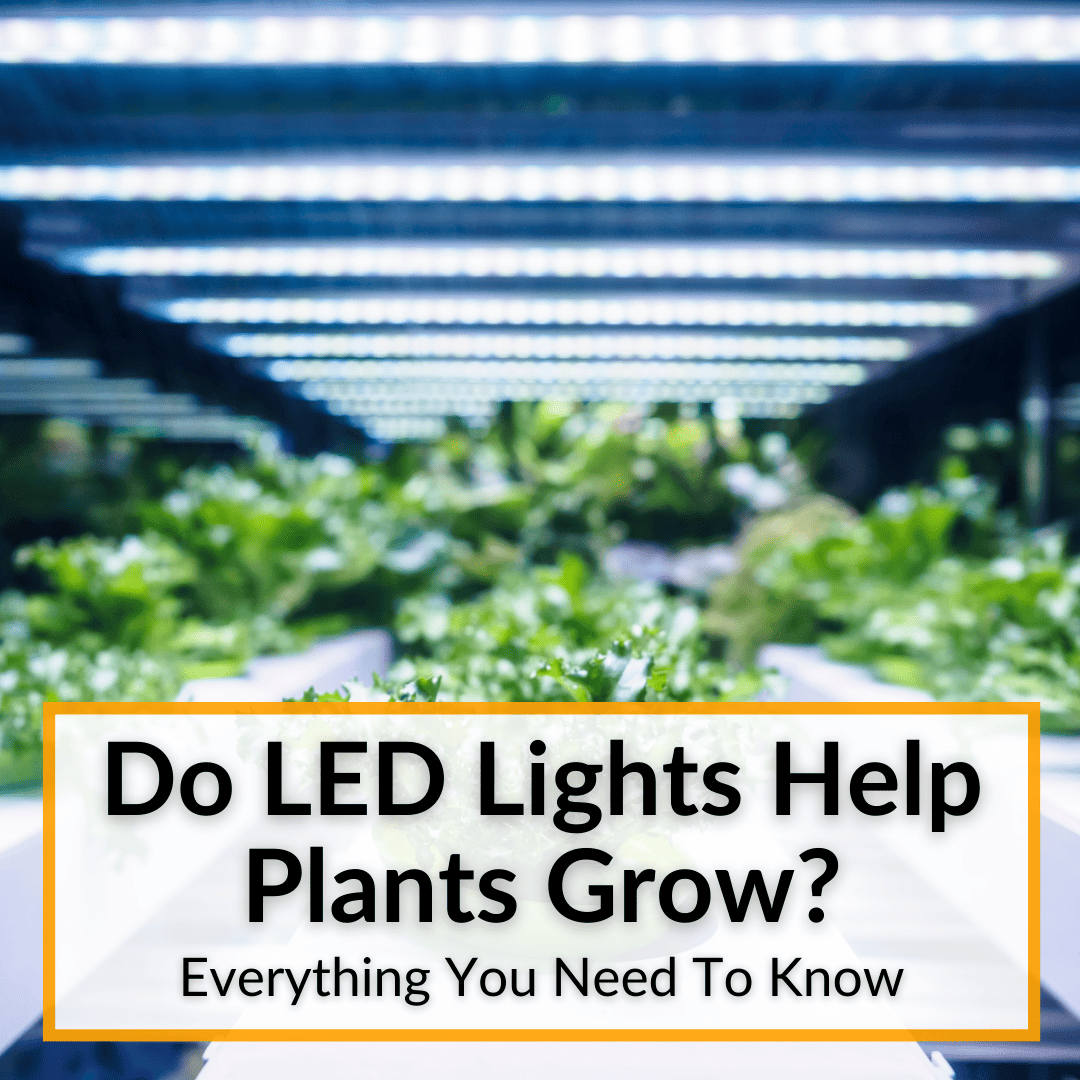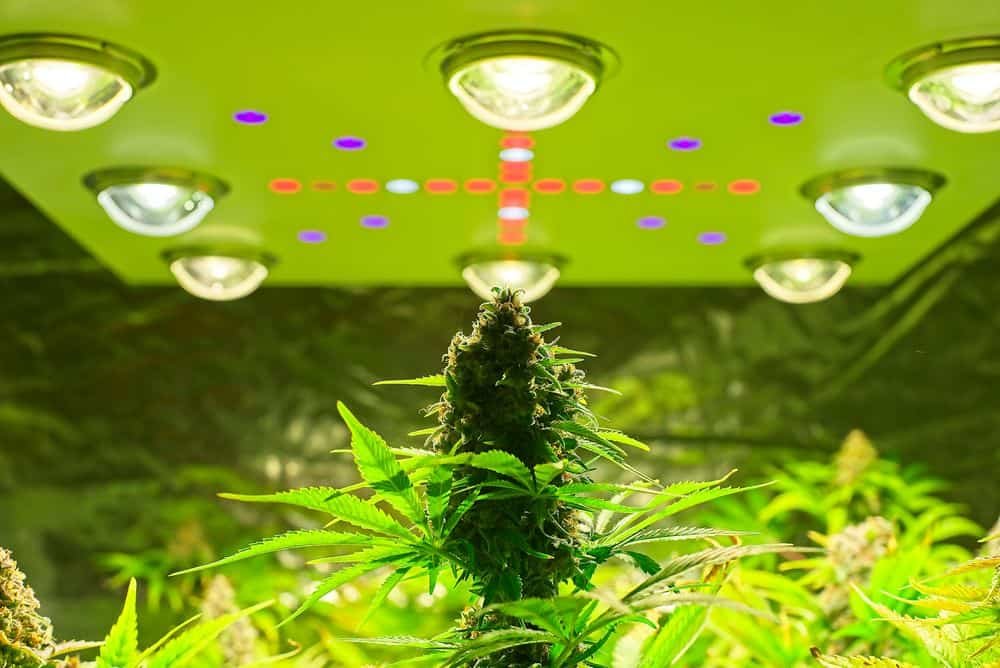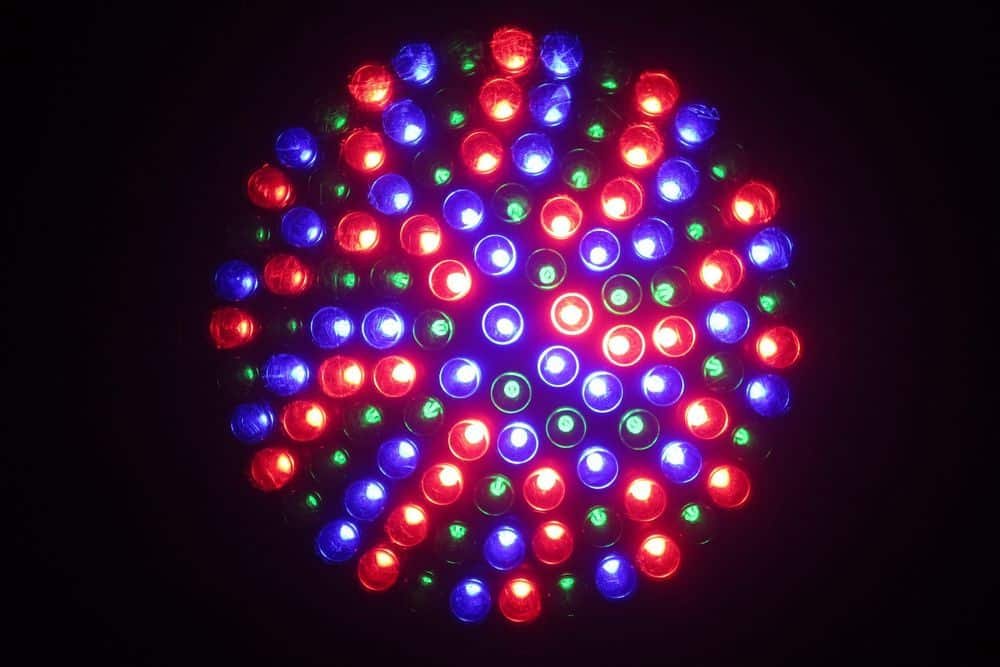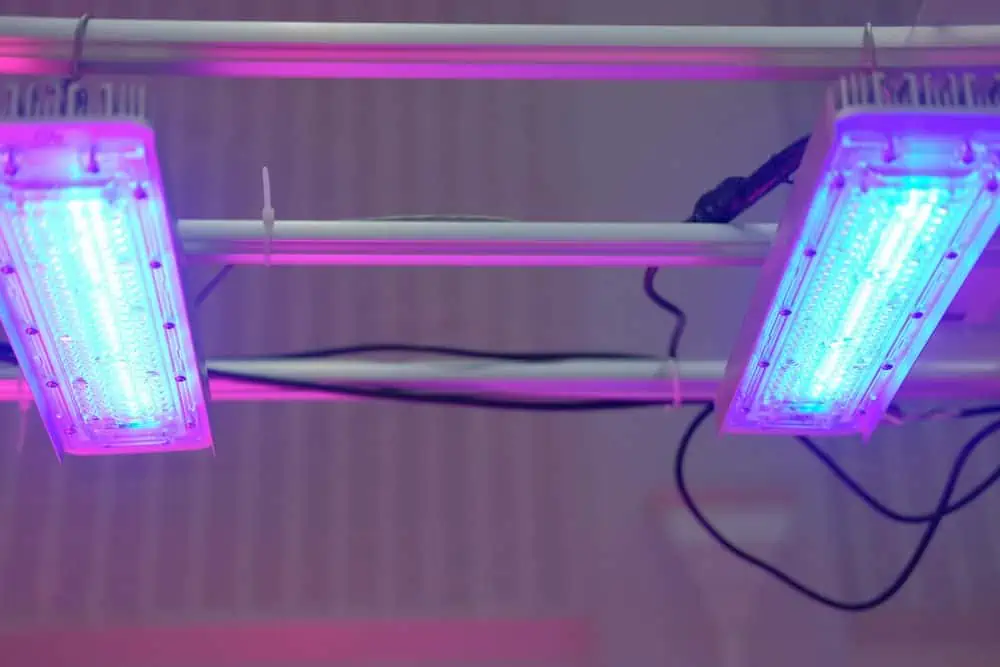
If you grow indoors, you need to supply that light.
You’ve probably realized there are a bunch of options for grow lights these days.
But only a few are good.
Are LED grow lights among the good ones? Do LED lights help plants grow, or are there better options?
Keep reading to find out. We’re going to cover everything you need to know about LED lights and their effects on plant growth, including the different types of LED grow lights and which type (i.e. spectrum) is best.
Contents
Do LED Lights Help Plants Grow?
Yes, LED lights help plants grow. In fact all lights help plants grow to some degree. A good LED light does it better than any other type.
Plants need light to grow, and the amount and type of light your plants receive play a vital role in determining how well they will grow.
Different colors of light stimulate different stages of plant growth, with blue light essential for root development and leaf growth and red light more important during the flowering stage.
LED grow lights are a popular choice for indoor growers, because they offer a number of advantages over traditional grow lights, such as high-pressure sodium (HPS) and metal halide (MH) lights.
LED grow lights are more energy-efficient, produce less heat, and have a longer lifespan than both HPS and MH grow lights. LED grow lights are also more versatile.
They can be designed to produce a full spectrum of light, or to produce specific colors of light that are beneficial for particular stages of plant growth.
When choosing an LED grow light, it is important to consider the stage of growth of your plants, the size of your grow area, and your budget. You also need to know how to use your LED grow light correctly. We will now go over the information you will need.
Light Spectrum And Plant Growth
Plants use light energy to produce food through the process of photosynthesis. The light spectrum is the range of all electromagnetic radiation, including visible light, ultraviolet (UV) light, and infrared (IR) light.
Plants use only a small portion of the light spectrum, called photosynthetically active radiation (PAR), for photosynthesis. PAR includes the light ranging from 400 to 700 nanometers (nm) in wavelength.
Different colors of light have different effects on your plants’ growth at different stages of the cycle.
Blue light (400–500 nm) is especially important for root growth and leaf development. Red light (620–700 nm) is important for flowering and fruiting.
Green light (500–620 nm) is not essential for plant growth, but it does play a role in photosynthesis. The same goes for yellow light. That is why most modern LED fixtures emit a full-spectrum white light that includes every wavelength of visible light.
LED Grow Lights And The Light Spectrum
Light-emitting diode (LED) grow lights produce different colors of light by using different types of LED diodes. You can learn more about how LED grow lights work to grow plants here.
LED grow light manufacturers can design the spectrum of an LED grow light to produce a full spectrum of light, or to produce specific colors of light that are beneficial for specific stages of plant growth.
LED grow lights offer a number of advantages over traditional grow lights in terms of the light spectrum emitted. We can designed them to produce a more precise spectrum of light than traditional grow lights, which means that you can provide your plants with the exact colors of light they need for each stage of their growth.
Grow lights that use LEDs are also more efficient at converting electricity into light than traditional grow lights. This means they can produce the same amount of light with less energy, which can save you money on your energy bills over time as your plants flourish.
Benefits Of LED Grow Lights
LED grow lights offer a number of benefits for plants over other types of grow lights, including:
- Increased growth rate
- Higher yields
- Reduced energy consumption
- Reduced heat output
- Longer lifespan
How To Choose The Right LED Grow Light
Each type of LED grow light—full-spectrum and red-and-blue grow lights—has its own advantages and disadvantages. But all kinds of LED lights grow plants.
Full-spectrum LED grow lights are the most versatile and can be used for all stages of plant growth. However, they can be more expensive than other types of LED grow lights.
Red-and-blue LED grow lights are a good option for growers on a budget. They are also a good option for growers who are growing plants that require a lot of light, such as cannabis. But red-and-blue LED grow lights may not be as effective for all stages of plant growth as full-spectrum LED grow lights.
Do LED Lights Affect Plant Growth: Final Thoughts
LED lights definitely help plants grow. All lights do. How well they help plants grow depends on the spectrum and the amount of light the light provides.
LED lights can have just about any spectrum you want. This means there are plenty of LED grow lights with the perfect spectrum for plants on the market. Those are the best types of lights for plant growth. They handily beat even CMH, which is the only other type we’d really recommend anymore.



Leave a Reply